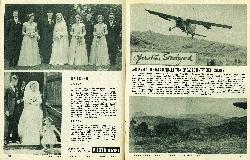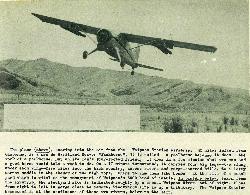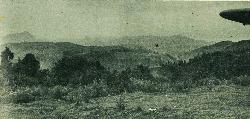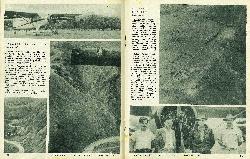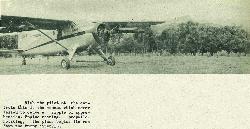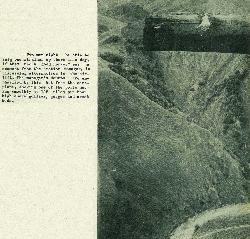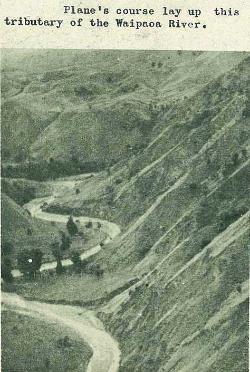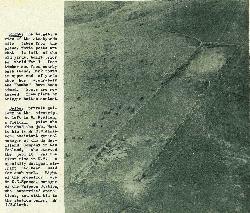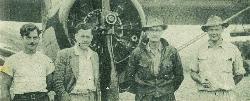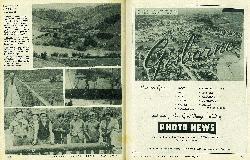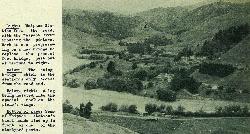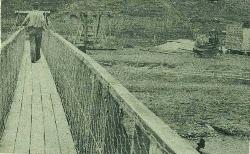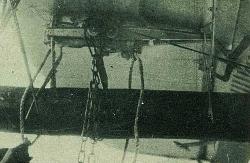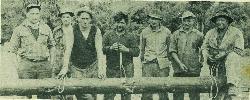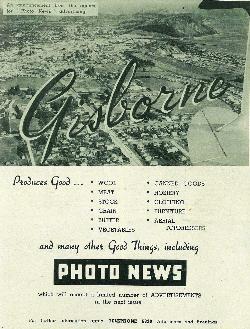27
Aeroplanes Take Over Difficult Task on Back-Country Sheep Station
The plane, soaring into the air from the Waipaoa Station airstrip, 45 miles inland from Gisborne, is a new de Havilland Beaver "Packhorse". It is called a packhorse because it does the work of a packhorse. But unlike man's four-footed friend, it does in a few minutes what two men and a good horse would take a week to do. On a 17-minute turnaround, it carries four big logs—two slung under each wing—five miles into the back country, across rivers and gorge-scarred hills, to a lofty narrow saddle in the shadow of the high tops, there to aim them like bombs at the site of a stock yard which is vital to the management of Waipaoa's 6000 head of. cattle.
Taken from the airstrip, the stockyard site is indicated roughly by a cross. Waipaoa River, out of sight, flows from right to left in gorge close to camera. Stockyards site is up a tributary. The Waipaoa Station homestead is at the confluence of these two rivers, below to the left.
28
With the pilot at the controls this is the moment which never failed to cause a ripple of apprehension. Engine roaring, propellor rotating, the plane begins its run down the bumpy airstrip.
"Two men might be able to snig one strainer up there in a day, if they had a good horse," was a comment from the station manager, in discussing alternatives to the airlift. The manager's doubts are emphasised by this shot from the aeroplane, showing one of the posts moving smoothly at 125 miles per hour, high above gullies, gorges and creek beds.
Plane's course lay up this tributary of the Waipaoa River.
29
The target. A view of the stockyards site taken from the plane. White posts are what is left of the old yards, built prior to World War I from timber cut from nearby bush stand. Dark posts at upper end of yards show how accurately the "bombs" have been aimed. Posts are released from plane by trigger button contact.
Portrait gallery at the airstrip. At left is Mr R. Allen, a Fieldair pilot who finished the job. Next to him is Mr R. W. Jamieson, assistant general manager of the de Havilland Company in New Zealand, who started the job. It was the first time in N.Z. a specially designed aircraft had been used for such work. Right of the propellor are Mr K. C. Spence, manager of the Waipaoa Station, who supervised operations, and with him is the station owner, Mr J. W. Clark.
30
Waipaoa Station from the road, with the Waipaoa River crossing the picture. Work is now progressing on a new bridge to replace the present foot bridge, just out of picture to right.
The swing bridge which is the station's only access from the road-end.
A log being hoisted into the special rack on the plane's wings.
Some of Waipaoa station's Maori hands line up in front of one of the stockyard posts.
31
An announcement from the agents for "Photo News" advertising.


